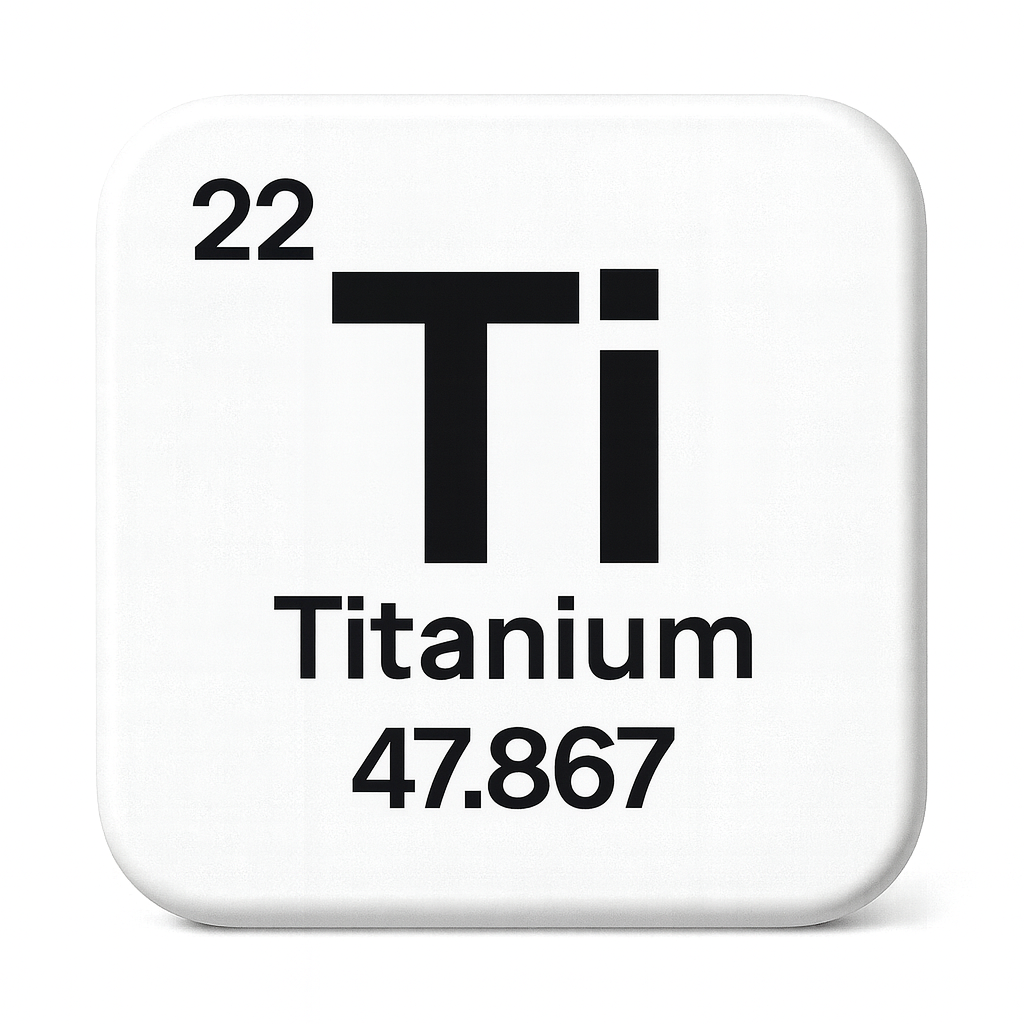Resources
Glossary
Titanium (Ti)
Titanium is a strong, lightweight, and corrosion-resistant metallic element with the chemical symbol Ti and atomic number 22. It’s a transition metal known for its exceptional combination of high strength-to-weight ratio, biocompatibility, and resistance to extreme environments—making it one of the most valuable structural materials in modern engineering, aerospace, and medical industries.
In appearance, titanium is a lustrous silver-gray metal that is both tough and ductile. It has a melting point of 1,668°C (3,034°F) and a density about 45% lower than steel but nearly as strong. This makes it ideal for applications where both strength and weight reduction are critical, such as aircraft components, jet engines, spacecraft structures, and high-performance automotive parts.
One of titanium’s most remarkable properties is its corrosion resistance. When exposed to air or moisture, it forms a thin, tightly bonded layer of titanium dioxide (TiO₂) on its surface. This oxide film acts as a self-healing barrier against oxidation, saltwater, acids, and most chemicals. As a result, titanium is widely used in marine environments, chemical processing equipment, and medical implants where other metals would corrode.
Titanium’s biocompatibility—meaning it doesn’t react with or harm human tissue—makes it an essential material for surgical implants, prosthetics, dental hardware, and joint replacements. It integrates naturally with bone through a process called osseointegration, providing long-term stability and strength.
In metallurgy, titanium is often alloyed with elements such as aluminum, vanadium, molybdenum, and tin to create titanium alloys (like Ti-6Al-4V), which offer even higher strength, fatigue resistance, and heat tolerance. These alloys are used extensively in aerospace structures, turbine blades, performance bicycles, and high-end fasteners.
Titanium is extracted primarily from ilmenite (FeTiO₃) and rutile (TiO₂) ores, often through the Kroll process, which reduces titanium tetrachloride (TiCl₄) using magnesium to produce metallic titanium. Major producers include China, Japan, Russia, and the United States.

